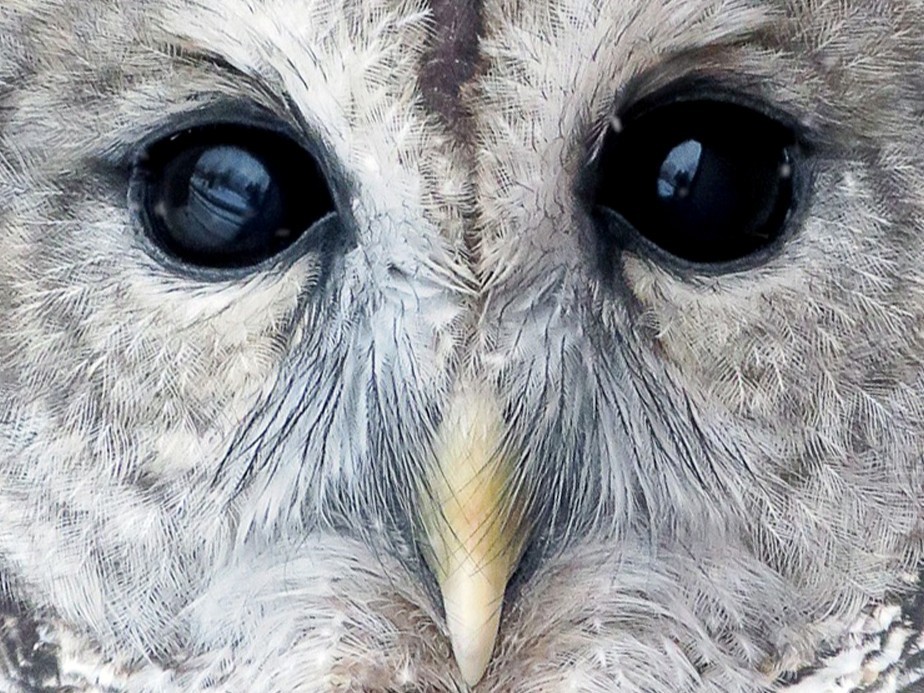- The significance of eye color in owls as an indicator of their hunting habits
- The differences in hunting times and behaviors associated with various owl species
- The role of zoos and wildlife conservation programs in preserving owl populations
- How understanding owl eye color can aid in conservation efforts
- The ecological impact of owls and the importance of their role in maintaining balanced ecosystems
The significance of eye color in owls as an indicator of their hunting habits
Owls are fascinating predators, and one of the most intriguing aspects of these birds is the color of their eyes. The color of an owl’s eyes can provide key insights into its hunting habits. For instance, owls with dark eyes, such as the barred owl, typically hunt at night. These nocturnal hunters have adapted to thrive in the dark, utilizing their excellent hearing and vision. The dark pigmentation in their eyes helps them to see better in low-light.conditions. On the other hand, owls with yellow or light-colored eyes, like the Eurasian eagle owl, may hunt during the day. This adaptation allows them to take advantage of different prey that is more active during daylight hours. By understanding the connection between eye color and hunting times, we can gain deeper insight into the behavioral patterns of these magnificent birds.
The differences in hunting times and behaviors associated with various owl species
The diversity among owl species leads to a variety of hunting times and behaviors. Nocturnal owls, like the aforementioned barred owl, have specialized adaptations to assist with their night hunting. They rely heavily on their acute sense of hearing, which allows them to locate prey even in complete darkness. These owls have asymmetrical ears, enhancing their ability to pinpoint sounds with remarkable accuracy. Conversely, diurnal owls, such as the Eurasian eagle owl, have developed strong vision for hunting in daylight. Their lighter eye color is correlated with their ability to function efficiently during the day. Crepuscular species, like the short-eared owl, prefer to hunt at dawn and dusk, balancing their activities between complete daylight and the depths of night. Each owl species’ unique adaptations showcase the incredible evolutionary diversity and specialization within this bird group.
The role of zoos and wildlife conservation programs in preserving owl populations
Owls face numerous challenges in the wild, including habitat loss, climate change, and human encroachment. Zoos and wildlife conservation programs play a crucial role in preserving owl populations. These institutions focus on breeding programs, habitat protection, and public education to raise awareness about the threats owls face. Breeding programs aim to increase the population of endangered owl species. For example, many zoos participate in breeding programs for the critically endangered Philippine eagle owl. Conservation programs also work to rehabilitate injured owls and reintroduce them into the wild whenever possible. By educating the public about owls’ ecological importance, zoos help foster a sense of responsibility and encourage conservation efforts at the community level. Through these combined efforts, zoos and wildlife conservation programs are vital in protecting and sustaining owl populations worldwide.
How understanding owl eye color can aid in conservation efforts
Knowledge about owl eye color and its relation to hunting habits can directly benefit conservation strategies. For example, studies on habitat preferences and hunting behaviors can inform habitat restoration efforts. Ensuring that owls have access to their preferred hunting grounds is essential for their survival. Additionally, knowing which owls hunt at night versus during the day can help conservationists plan interventions more strategically. For instance, creating safe zones that cater to the specific needs of both nocturnal and diurnal owls can enhance conservation outcomes. Researchers can also use this information to monitor owl populations more effectively. By tracking owls’ hunting behaviors, scientists can assess the health and stability of owl populations. Such data-driven approaches enable more precise and effective conservation measures, ultimately contributing to the long-term survival of owl species.
The ecological impact of owls and the importance of their role in maintaining balanced ecosystems
Owls play a pivotal role in maintaining ecological balance. As apex predators, they help control the populations of small mammals, insects, and other birds. This regulation is crucial in preventing overpopulation and the consequent degradation of habitats. Owls also contribute to the health of ecosystems by preying on sick and weak animals, thereby promoting the overall fitness of prey populations. Their presence is an indicator of ecological health. A healthy owl population often signifies a robust and balanced ecosystem. Conversely, a decline in owl populations can indicate underlying environmental issues that need addressing. Thus, protecting owls is not just about preserving a single species but about maintaining the intricate web of ecological relationships that support biodiversity. Conservation efforts aimed at protecting owls have cascading benefits for entire ecosystems, underscoring the importance of these magnificent birds in our natural world.
By examining the color of an owl’s eyes, we gain an intriguing insight into the intricate ways these birds interact with their environment. The distinctive hunting patterns guided by eye color highlight the adaptive diversity among owl species. Notably, conservation programs and zoos play a critical role in ensuring these creatures’ survival. The scientific understanding of owl behaviors, particularly how eye color influences hunting, aids in developing targeted conservation strategies. Moreover, owls’ significant ecological role further emphasizes the need for diligent conservation efforts, safeguarding these birds and the wider ecosystems they help stabilize and sustain.
*****
Source Description
Today is Were you aware that the color of an owl’s eyes can indicate what time it hunts? An owl with dark eyes, like barred owl Lia, is a strictly nocturnal hunter. Owls with lighter colored eyes, like Eurasian eagle owl Eagon, may hunt during the day!


